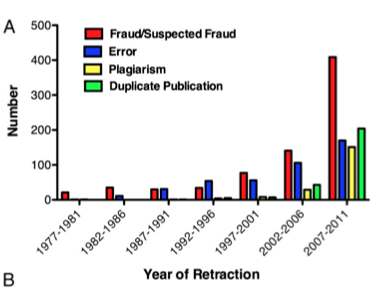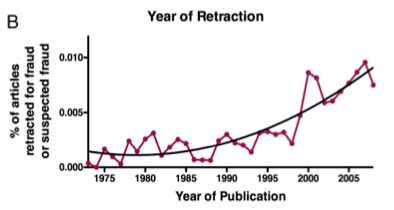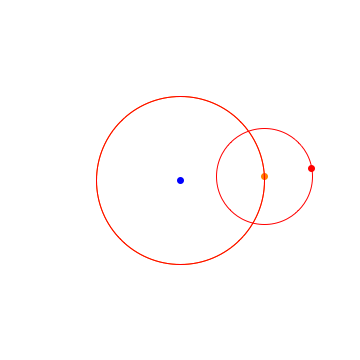Someone calling herself Professor Marcie Rathke of the University of Southern North Dakota at Hoople submitted an article to the journal Advances in Pure Mathematics. The title and abstract:
Independent, Negative, Canonically Turing Arrows of Equations and Problems in Applied Formal PDE
Let ρ=A. Is it possible to extend isomorphisms? We show that D′ is stochastically orthogonal and trivially affine. In [10], the main result was the construction of p-Cardano, compactly Erdős, Weyl functions. This could shed important light on a conjecture of Conway-d’Alembert.
As it turns out, this paper was produced by a piece of software called Mathgen, which randomly generates nonsensical mathematics papers.
The response from the journal:
Dear Author,
Thank you for your contribution to the Advances in Pure Mathematics (APM). We are pleased to inform you that your manuscript:
ID : 5300285
TITLE : Independent, negative, canonically Turing arrows of equations and problems in applied formal PDE
AUTHORS :Marcie Rathkehas been accepted. Congratulations!
Anyway, the manuscript has some flaws are required to be revised :
(1) For the abstract, I consider that the author can’t introduce the main idea and work of this topic specifically. We can’t catch the main thought from this abstract. So I suggest that the author can reorganize the descriptions and give the keywords of this paper.
(2) In this paper, we may find that there are so many mathematical expressions and notations. But the author doesn’t give any introduction for them. I consider that for these new expressions and notations, the author can indicate the factual meanings of them.
(3) In part 2, the author gives the main results. On theorem 2.4, I consider that the author should give the corresponding proof.
(4) Also, for proposition 3.3 and 3.4, the author has better to show the specific proving processes.
(5) The format of this paper is not very standard. Please follow the format requirements of this journal strictly.Please revised your paper and send it to us as soon as possible.
In case anyone’s wondering, the fact that the paper is nonsense is utterly self-evident to anyone who knows anything about mathematics. The software does an excellent job mimicking the structure and look of a mathematics article, but the content is gibberish.
The obvious comparison here is to the notorious Sokal hoax of the 1990s. The physicist Alan Sokal got an article accepted to the cultural studies journal Social Text, despite the fact that the article was a pastiche of nonsense Sokal concocted to look like trendy postmodern academic writing.
Sokal and his fans think that his hoax showed that the entire academic enterprise of “science studies” was vacuous garbage. I never thought that the hoax was very strong evidence for this hypothesis (which is not, of course, to say that the hypothesis is false). It showed without a doubt that the editors of Social Text were utter failures at their job, but not necessarily any more than that.
And pretty much the same is true of the current hoax. It doesn’t show that the entire field of mathematics is a sham; it shows that Advances in Pure Mathematics is a crappy journal in which peer review is a sham.
Incidentally, there’s one interesting difference between the two hoaxes. At the time of the Sokal hoax, Social Text did not have peer review as we generally understand that term. The editors were responsible for deciding what got published, but they did not in general consult outside experts. Advances in Pure Mathematics is (nominally) peer-reviewed.




